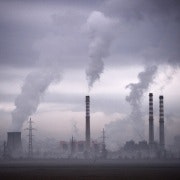NSW prepares for a gas market collision
The collision of two markets and the resultant consequences for many Australians will be on full display in Sydney this week, when gas market stakeholders meet at the second annual Australian Domestic Gas Outlook conference to discuss the future of supply.
This collision will be between a domestic market in which 260 petajoules of annual gas supply contracts are due to expire over the next four years, starting this year, and an export market where each of the six LNG trains being developed at Gladstone will require a similar volume of gas annually.
The problem is not a lack of gas in the ground, but an inability at the domestic level to make a plan to exploit this huge eastern Australian resource for local benefit in sufficient quantities and at affordable prices.
For gas users in New South Wales, the next four or five winters will be ones of discontent, as the state government and upstream petroleum industry struggle to find a modus vivendi and manufacturers remain unhappy.
The parties are even dusting off the national gas market rules, and taking a closer look at section 20, which enables a state government to override legal contracts to control where fuel should be directed in a supply crisis.
Essentially, in a crisis, a government will give priority to hospitals and emergency services over households and then to the residential community over large industrial consumers.
Industrial consumers may be confronted with a stark choice: cease operating or reduce production. Either way, workers will then be on the firing line.
While it’s difficult to gauge just how many workers could be affected in New South Wales, the state’s manufacturing sector has 40,000 employees, although a relatively small portion work for gas-intensive factories.
Still, these companies employ others to provide goods and services and any crisis in fuel supply would have a ripple effect.
In a worst case scenario, if there is a very cold winter in the next three to four years there could be a shortfall of perhaps 100 terajoules of daily NSW supply, and up to four dozen big industrial businesses would be affected.
Even if this doesn’t eventuate, many more consumers will have to suffer rising prices. In fact, they are already feeling the pain of climbing gas bills.
Martin Ferguson, who chairs the advisory board of the Australian Petroleum Production & Exploration Association, wrote in Sydney’s Daily Telegraph this month:
“If ever there was a stark warning about the need for NSW to develop its gas resources, it is delivered in the form of a thumping 20 per cent increase in gas bills. Reports that the annual gas bill for Sydneysiders will rise by up to $200 show there is too much at stake for the impasse regarding gas development to remain.”
The state’s relatively new resources and energy minister, Anthony Roberts, will likely put the O’Farrell government’s spin on the situation when he attends the gas conference this week.
He is the opening speaker at the event and comes to it at a time when the government is “moving to fast-track” a coal seam gas development operated by Santos in the Pillaga woodland in the state’s north-west.
Deputy premier Andrew Stoner, reporting that the development has been declared a “strategic energy project,” has signalled that the government will “make a final decision” on approving it next January, before the state election the following March, and says the go-ahead should see gas flowing by 2017.
Stoner says the Pillaga project can meet 20 to 50 per cent of the state’s gas needs.
Meanwhile, the Greens are trying to have the NSW Independent Commission against Corruption examine the agreement with Santos, claiming it “undermines the integrity of the state planning and assessment process.”
For the 1.3 million gas customers in a state that imports 95 per cent of its needs, the outlook is far from comforting.
Unsurprisingly, a number of the large gas consumers will be on hand at the conference to have their say, along with APPEA , other lobby groups and some of the supply companies. Also in attendance will be representatives of the rural communities, who are on the front line twice: the proposed development action is on their home turf and, along with other energy customers, they will wear the consequences of much higher prices.
Keith Orchison, director of consulting firm Coolibah Pty Ltd, author of This is Power blog and editor of OnPower website, served as chief executive of the upstream petroleum industry lobby group for 11 years.
















